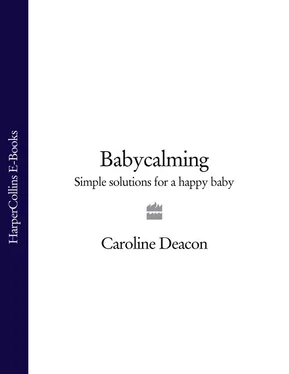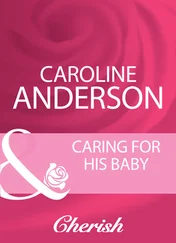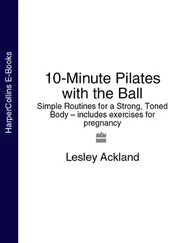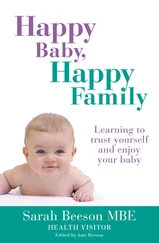Tuning In to Your Baby’s Needs
Take the time to tune in to your baby and find out what he wants. You will not only have a happier baby and a good relationship, you will be encouraging his development!
Barry Lester worked with one-month-old babies, taping their cries and playing them back to their mothers, asking what was wrong. 5He found that the babies whose mothers could interpret their cries correctly, had higher mental scores at 18 months of age and had learnt 2½ times as many words as babies whose mothers had not tuned in to their babies’ cries.
‘If the mother can read her baby’s cues she is more likely to be providing the kind of child-rearing environment that will enrich development and facilitate cognition later on,’ Lester says. 6
Try to remember that most babies have fairly simple needs – the need to be touched, held and fed, the need to be comfortable, the need to feel safe, the need for human company and the need to sleep. They cry to let someone know there is a problem, and all they expect is that someone will deal with the problem. Your baby won’t cry to annoy you, ‘get at’ you, or from any other complicated motive. Try to avoid projecting your own feelings onto your baby when interpreting why he’s crying.
As he grows, you can encourage him to use other methods of communication by interpreting his cries verbally: ‘Oh, you want a drink, do you?’ If you are calm when he is agitated, he will begin to learn to calm himself and regain control. As he reaches his toddler years he is going to need to learn about ‘deferred gratification’, so not responding instantly to screams will do an older baby no harm, as you will see later on in this book.
Why Your Baby Might Be Crying
• Listen to your gut feeling – what do you think your baby needs? You are probably the best person to know.
In the first few weeks, most mothers try feeding first. Suckling is comforting, and you cannot overfeed a breastfed baby. If you are formula feeding, you need to keep an eye on the amount your baby consumes in 24 hours, but if you’re mixing feeds correctly and staying within the recommended amounts, you will not overfeed your baby.
If he is opening his mouth and turning his head (‘rooting’), this is a good indication that he’s hungry, so you can begin to look for these cues, and feed him even before he starts crying. We will look at why baby-led feeding is important, especially with breastfeeding, in the section on Step One, as well as looking at other ways of fulfilling your baby’s need to suckle.
Step Two: Comfort
IS HE COMFORTABLE?
Check his nappy. Feel his abdomen to find whether he’s too cold or hot. Is he in pain? If he is in pain, he will probably not stop crying even when you pick him up, and his crying will be intense; high-pitched, with breath-holding in the middle – although, as we have seen earlier, it’s not possible to be exact about the meaning of a particular type of cry. However, if you are at all worried, do ring your GP.
If you’ve eliminated obvious physical discomfort, then your baby may be frightened, lonely or bored; i.e., in need of human company for comfort! In this case he will probably stop crying when you pick him up. You will find lots of suggestions for soothing a crying baby later on in the section on Step Two.
Paediatrician Berry Brazelton suggests that you don’t rush straight in but watch instead to see whether your baby can soothe himself. He suggests six things to try in turn. First, show your baby your face to see if that reassures him. Then, speak gently to see if face and voice alone can soothe. The next method to try is a warm hand laid gently on his tummy ; then try both hands to contain his arms and legs. If none of these manages to calm your baby, pick him up . It can be good to hold him in a position which makes him feel safe and secure (see page 79) or to wrap him up securely with access to his knuckles or fingers so that he can suck them (see page 79). Sucking is the most soothing thing for a baby. 7
Is he tired? Babies are not skilled at getting themselves to sleep, and can cry through tiredness. Your baby will need lots of sleep to help him grow and learn, and there is information about ways of helping your baby to sleep in the section on Step Three, as well as how your baby’s need for sleep can dovetail with yours, so you and your family get all the sleep you need.
My second baby wanted to be held a lot when he was little, and my first was just aged 20 months at the time and wanting mummy too. So I bought a second-hand baby sling from a friend and ‘wore’ my newborn on my front for the first couple of weeks. It kept him quiet and content and left me free to get on with everything else.
– Sonia, mother of Anna, Ricky and Jessica
~ Times Change ~ Answer – 1899 ~
Dr Holt, author of the bestselling The Care and Feeding of Children, addressing the third annual convention of the National Congress of Mothers in Washington DC, mid-February 1899
Конец ознакомительного фрагмента.
Текст предоставлен ООО «ЛитРес».
Прочитайте эту книгу целиком, купив полную легальную версию на ЛитРес.
Безопасно оплатить книгу можно банковской картой Visa, MasterCard, Maestro, со счета мобильного телефона, с платежного терминала, в салоне МТС или Связной, через PayPal, WebMoney, Яндекс.Деньги, QIWI Кошелек, бонусными картами или другим удобным Вам способом.












